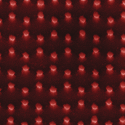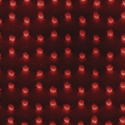Artificial graphene
Nearly every paper in the vast literature on graphene starts by explaining that graphene’s many exotic features occur because its electrons can be described as though they are massless particles similar to photons. More specifically, their energy varies linearly with momentum near two special points—called Dirac points—in the momentum space. The reason this happens is because the carbon atoms in graphene are arranged in a perfectly two-dimensional honeycomb lattice.
In a Rapid Communication appearing in Physical Review B, Marco Gilbertini and coworkers at NEST and Scuola Normale Superiore in Pisa, Italy, in collaboration with colleagues in the US, report the fabrication of a device from semiconducting heterostructures that has the potential to behave like artificial graphene. They create a two-dimensional electron gas of very high purity confined in an quantum well. On top of this, they grow a honeycomb network of nanosized “pillars” that modulate the electric potential in the two-dimensional electron gas, analogous to carbon ions in the graphene lattice. According to the calculations of Gilbertini et al., the electronic dispersion due to this hexagonal superlattice can be Dirac-like. Although the appearance of Dirac points in the electronic energy spectrum of such structures still awaits final experimental verification, the authors provide preliminary evidence that features in the observed spectrum are indeed consistent with the calculations.
Such artificially engineered “graphene” may offer some advantages over its natural prototype, such as extremely high purity of samples, an ability to tune the parameters of the spectrum, and the possibility of shaping the artificial graphene into geometries like ribbons with perfect edges, which are more useful in certain applications. – Ashot Melikyan





